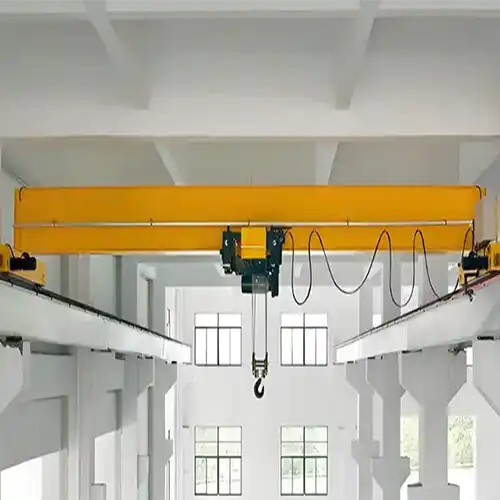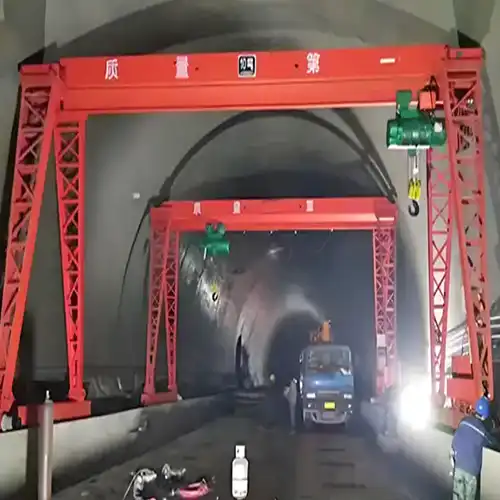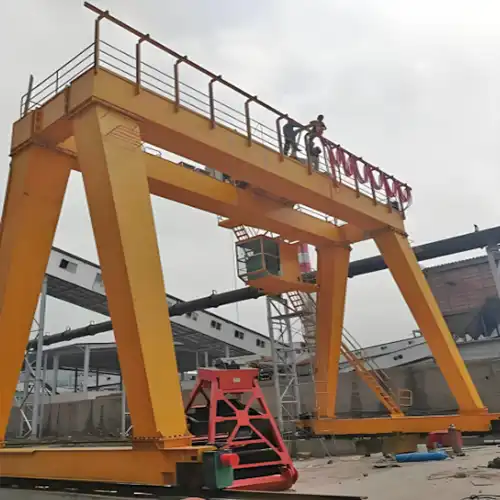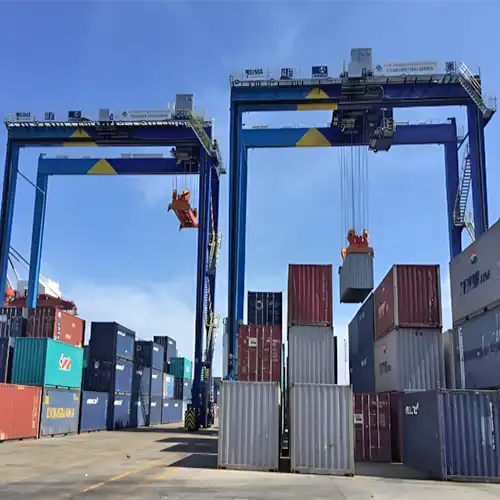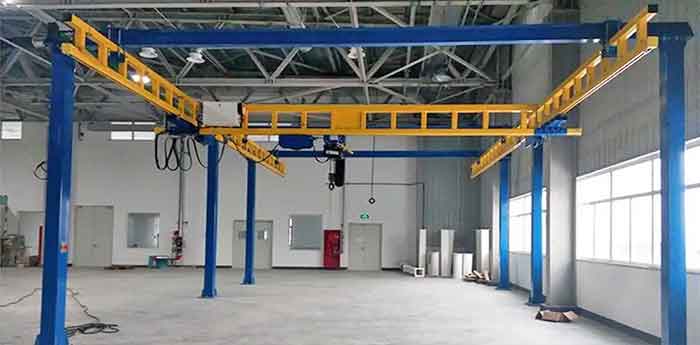
KBK Rail System V.S. Rigid Rail Workstation Crane System
KBK Rail System V.S. Rigid Rail Workstation Crane System , what is the difference? How to select workstation cranes for your application? Check now!
Flexible KBK Rail Crane
The kbk rail system is mainly consisted of supporting columns, attached beams, running rails, main beams, electric hoists, and power supply systems, etc. It can quickly and safely complete the material handling and loads lifting operation of various materials and objects.
Its travelling mechanism is very light, easy to operate, and can fully meet your workstation material handling requirements .With different applications and using requirement, the kbk rail system can be designed into ceiling mounted suspension crane and floor mounted free standing kbk rail system.

Ceiling mounted workstation kbk rail system
The suspension kbk rail can be mounted on the ceiling structure without additional columns, which improves the space utilization rate and has high cost-effectiveness.

Floor mounted freestanding workstation kbk rail system
The floor mounted freestanding kbk rail system is light duty and economical compared with traditional freestanding kbk crane.
The rigid kbk rail combined self-supporting crane system adopts a C-shaped track, which adopts a closed track design with high strength and light weight, which effectively reduces the wear of the track trolley and hoist wheels. In the case of insufficient lifting points, truss-type steel rails can be used to strengthen the load-bearing of the rails, thereby achieving a larger span and reducing the number of hangers. The steel truss design allows the lifting span to reach 11m, reducing the possibility of the support column obstructing the work site, so that the freestanding rail crane is widely used in various industries.
Rigid rail workstation lifting system
The rigid rail workstation crane is composed of supporting steel structure, fixed rail, main beam, electric hoist, power supply system, safety system and other main components, etc. The rigid rail worksation crane system is used for material transportation between work units, which is simple and reliable to use, light to move, accurate in positioning, and minimizes the labor intensity of workers. High-quality cold-rolled steel sections and robust truss construction ensure operational reliability, safety, and a long service life with minimal maintenance.

Ceiling mounted suspension workstation lifting crane

Floor mounted freestanding workstation lifting crane
Rigid Rail Workstation Crane VS Flexible KBK Rail Crane
Rigid rail cranes are used for material transportation between work units, which are simple and reliable to use, easy to move, accurate in positioning, and minimize the labor intensity of workers. High-quality cold-rolled steel sections and sturdy truss structures ensure operational reliability, safety, and a longer service life with minimal maintenance.
The flexible KBK enclosed track crane is composed of main components such as supporting columns, attached beams, running tracks, main beams, electric hoists, and power supply systems. The enclosed track kbk crane system is very light, easy to operate, and can move at will. It can also be simply hung on the top structure of the workshop without additional columns, which improves space utilization and very economical.
Difference between flexible kbk rail and rigid workstation crane system
Item | Rigid Crane | Flexible crane |
Load capacity | Max 2000kg | Max 3000kg |
Connection method | Rigid connection (compact & stable) | Suspension device (flexible) |
Span | Max 10m | Max 8.5m (single girder) |
End carriage | Yes | No |
Rail | Truss type | Monorail |
Application | Limited space | / |
Structure of crane systems
- Combined rigid rail crane : the connection between the I-beam and the profiled rail, and the connection between the profiled rail and the main beam are rigid;
- Flexible KBK rail crane: the connection between the I-beam and the track, and the connection between the track and the main beam are flexible;
Support center (column center distance);
- Combined rigid rail crane : Free standing type: 6m-9m; suspended type: 1.6m-9m;
- Flexible kbk rail workstation lifting crane: Flexible KBK rail it is affected by the lifting capacity, and , generally is about 30cm-3m;
Span of crane system
- Combined rigid rail crane : :up to 9m, main beam length up to 10m;
- Flexible KBK rail: Vary with crane capacity. 1 ton: 7m, main beam 8m; 2 tons: double beam, electric operation;
Height of headroom
- Combined rigid rail crane : :embedded hanger, saving headroom;
- Flexible KBK rail : higher headroom, relatively small hook height;
Requirements for rigid structure;
- Combined rigid rail crane : with true free standing crane structure; longer support center saves steel structure;
- Flexible KBK rail: requires an additional set of steel support structure ; suspended type requires more steel structure;
Safety of the hanger
- Combined rigid rail crane : Rigid connection, not easy to loose and fall;
- Flexible KBK rail: Flexible connection, the pin is easy to crack, causing the track to fall;
Safety of rail crane trolleys
- Combined rigid rail crane : The design of the side plate of the rigid rail trolley can ensure that the connection between the trolley and the fixed rail must be reliable. Even if the wheels of the rail trolley are damaged after several years of use or under extreme conditions, the side plate can still be safely stuck on the fixed rail. On the track, it will never fall off. It can ensure that the connection between the trolley and the fixed rail must be reliable;
- The flexible KBK rail trolley is not designed with safety devices. Once the axle cracks, the trolley will completely fall from the track.

